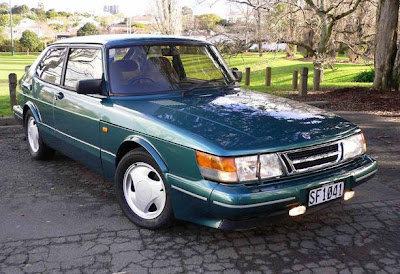
I have a new toy. A Saab Aero (another one). There's just something about them that I like. This one is a 93. The last year they were manufactured and the last of the hand made Saabs before General Motors bought the brand and pushed all of their models onto a common platform with Renaults and other badge engineered cars. It's not the turbo. Oddly it is perkier than my old turbo, which was disappointing.
The Aero coupe is a good example of iconoclasm in design - The One & Only - it is curiously gothic, tall, curved screen, long profile; apparently referring to the Saab aircraft manufacturing tradition. To me it seems a bit of a stretch to associate a car with a plane, but I suppose the cockpit is reminiscent of a Cessna or something like that. I took flying lessons in the 80's and I have to say, in truth, their ain't no similarity whatsoever.
There was a terrific article in Fast Company magazine a while back that talked about (ironically) the Renault:
Le Quement's work proves that innovation doesn't necessarily have to be pretty. But it does have to be original. One of the auto industry's most provocative and uncompromising designers, le Quement has scored huge hits with small cars such as the Clio, Twingo, and now the Megane -- a cheeky little compact that has overtaken Volkswagen's conservatively designed Golf to become western Europe's best-selling car.
Fans fete him for reviving French style and injecting cars with personality again. Either way, le Quement says, bland, lowest-common-denominator design is the kiss of automotive death; better to anger some potential buyers to win the love of some others. "The future does not belong to designers creating products that do not displease the customer," he says, citing a J.D. Power and Associates survey that says carmakers that polarize opinion make juicier margins on the cars they sell. The study found that cars that people either love or hate -- such as the Chrysler PT Cruiser and Infiniti FX -- "sell quicker and at a higher profit margin" than cars that get lukewarm reactions.
I love it. Quirks and all.
Fast Company Article
Comments
Post a Comment